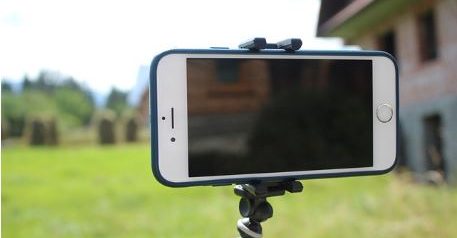
How to make an online course – Part 1: Planning
Nearly a year ago, we led a free CPD session on Making and publishing your own Maths videos. This year, we will instead be sharing some blog-posts to share the knowledge on How to make an online course.
During the training session, we provided a method for creating video courses and summarised it in a simple process map, which has been updated below. The idea here is to follow a set of procedures to allow you to create high quality videos in an efficient and consistent manner.

We will be going through each of the steps and focusing on how to create an online course rather than whether you should. This is a separate question altogether that merits serious consideration prior to embarking on this journey and is partly covered in our FAQs for educators.
In Stage 1 of the workflow, there are three steps to consider so let’s address each of them, one-by-one.
Content
Our focus at educ8all is curriculum-aligned content. This means that we are primarily looking for educators with deep experience of specific subjects and an appreciation of the nuances between exam boards where necessary.
We would expect that educators seeking to deliver curriculum-aligned courses would know which subject, Key Stage level and exam board(s) (where relevant) they are best placed to cover. We would not expect you to be seeking to deliver an online course in which you have no experience in delivering in any format.
So, is there anything that merits deeper thinking when deciding what content to cover? Yes. Delivering a course that covers, for example, A-Level Chemistry is a significant undertaking and therefore it is natural to consider delivering this in stages via what may be described as mini courses.
Your coverage of the curriculum need not be in the same order as the curriculum and this freedom presents a choice of what (not) to cover. We would expect that the course description conveys clarity over what is (not) covered.
This means that while the subject, Key Stage level and exam board(s) may be clear in your mind, you may still need to determine exactly what your first course will cover.
Style of video
We think that there are at least 5 key styles of video:
- Classroom
- Talking head
- Content & voiceover
- Animation / action
- Hybrid
You can read more about these here. The reason why it is important to determine your preferred style(s) is that you may need to purchase additional equipment to deliver a premium quality course. This is not to say that gimmicks are required or advisable (!) but to make the point that there are minimum standards that you will wish to reach to ensure that the audio-visual quality does not detract from the teaching. You can learn more about the audio-visual standards here.
In the next post, we shall cover some of the equipment items that you may wish to consider but before that point you may wish to consider the following:
- Do you wish to be seen on-screen at any point? If so, you may need to purchase a camera if your phone or webcam does not enable you to meet the audio-visual quality standards. If there is a lack of natural lighting where you plan to record then there may need to be a purchase of artificial lighting.
- Do you wish to have content prepared (e.g. slides) in advance to provide visual cues to you or the students taking your course? If so, you may need to purchase software licences to prepare these materials. This software may also be relevant if you will be preparing activity sheets. If this content is digital then you may need screen-recording software.
- Will you be recording (your voice) in a quiet area? There may need to be a purchase of a good quality microphone and/or editing software to enable you to cut out background noise.
Engagement
How much impact you can make on a student’s learning outcomes will depend on a number of things that will include the pedagogical techniques you employ in each lesson to capture their attention and spark their curiosity to learn.
Finding a way to engage students when they are learning online is incredibly important because the environment that they will be learning in may be very different to the one you may wish to create when teaching them in a classroom or one-to-one setting. As their learning environment is out of your control, it is likely that there may be significantly more distractions than you may wish to allow and it is for this reason that create engaging content will be of the utmost importance.
This means that there may be some stylistic elements you may wish to consider beyond the technology elements discussed above. These include:
- How long will your videos be?
- How accessible is the content? Think of font sizes and colour palettes that work for different types of devices.
- Will your video begin with the learning outcomes or jump into the content?
It is possible that you may wish to vary the techniques you use to get engagement (and ultimately impact) and that getting to the right answer that works for you and the students is an iterative process. This may seem like an obvious statement to make if you have gone through the process of developing your teaching style but it should not be forgotten that an online course is taken via device that can provide multiple simultaneous distractions.




Responses